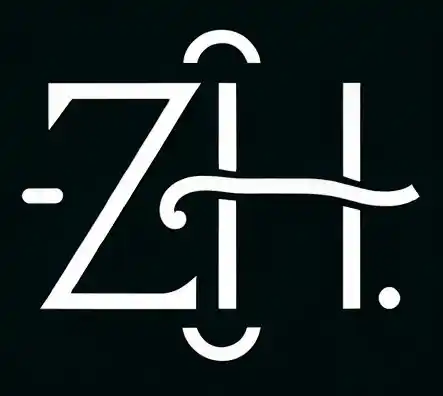How Web 3.0 is Shaping the Future of Business with Zeeshan Hayat?

We’re amidst a transformative era in technology—Web 3.0 has firmly established itself, redefining the way businesses operate, innovate, and expand. But this isn’t just a buzzword or another incremental upgrade. Web 3.0 offers a decentralised, data-driven ecosystem that’s poised to unlock new possibilities for businesses, entrepreneurs, and industries alike.
Let’s cut through the noise and explore how you can leverage Web 3.0 to create real, tangible value.
Simple Terms to Know for Better Understanding
Here are key terms to help you better understand how Web 3.0 works:
- Web 3.0: The internet’s evolution enabling user-centric data ownership and privacy, leveraging blockchain technology for decentralised control.
- Blockchain: A tamper-proof distributed ledger that ensures transparency, trust, and security in data transactions.
- Smart Contracts: Self-executing digital agreements that automate processes based on predefined conditions, eliminating intermediaries.
- Decentralized Identifiers (DIDs): Self-sovereign identity systems enabling users to control and manage their personal data independently.
- NFTs (Non-Fungible Tokens): Blockchain-certified unique digital assets representing ownership of art, media, and collectibles.
- Tokenization: Transforming real-world or digital assets into blockchain-based tokens for seamless trading and ownership management.
- DAOs (Decentralized Autonomous Organizations): Blockchain-based entities governed by member consensus through transparent voting systems.
- DeFi (Decentralized Finance): Blockchain-powered financial ecosystem offering banking-like services without traditional intermediaries.
- Immutable Ledgers: Unalterable blockchain records ensuring permanent, transparent, and reliable transaction histories.
Web 3.0: The Decentralized Evolution of the Internet
Web 1.0, the first iteration of the internet, was largely static, offering read-only websites where users could consume information but had minimal interaction.
Web 2.0 brought dynamic content and interactivity, enabling social media, e-commerce, and user-generated content, but it centralised power and data in the hands of tech giants like Google, Facebook, and Amazon. This centralization led to privacy concerns, monopolistic practices, and limited user control over personal data.
Web 3.0 transforms this paradigm by decentralizing the internet through blockchain technology. It empowers users with true ownership of their digital assets and data, allowing them to interact directly with decentralized applications (dApps) without relying on intermediaries. This ownership is facilitated through technologies like smart contracts, NFTs, and decentralized identifiers (DIDs), which provide transparency and autonomy.
Furthermore, Web 3.0 incorporates AI and machine learning to create a more intelligent and intuitive web experience. These technologies enable personalized recommendations, predictive analytics, and efficient interactions between businesses and consumers, fostering a seamless, user-centric ecosystem. Decentralized finance (DeFi), decentralized autonomous organizations (DAOs), and tokenized economies are just a few examples of how Web 3.0 is revolutionizing industries by eliminating traditional barriers and intermediaries.
In essence, Web 3.0 represents a shift towards a trustless, transparent, and self-sovereign internet, where users retain control and enjoy smarter, more meaningful interactions.
Practical Ways to Harness Web 3.0
Redefine Customer Relationships with Decentralized Insights
In Web 2.0, businesses were reliant on platforms like Google, Amazon and Facebook to interact and market to their customers. Web 3.0 changes the dynamics by giving businesses access to decentralised, permissioned data. This means you can now:
- Build hyper-personalized products without breaching user privacy.
- Analyse customer behaviours through decentralised identifiers (DIDs) that offer richer, verifiable insights.
For instance, imagine being able to reward loyal customers with cryptocurrency-based tokens that are fully transparent and easily redeemable across multiple platforms.
Supply Chains That Think for Themselves
Web 3.0’s blockchain backbone offers unparalleled transparency in supply chains, reducing inefficiencies and building trust across every stakeholder. Here’s how:
- Smart contracts automate compliance checks, ensuring timely payments and deliveries.
- Immutable ledgers track every step of a product’s journey, making recalls or audits seamless.
Companies like Walmart and Maersk are already using blockchain to revolutionize their logistics—why not explore what it could do for you
Marketing That Customers Actually Want
Forget intrusive ads and blanket campaigns. Web 3.0 enables opt-in marketing where users willingly share their preferences in exchange for value—be it discounts, exclusive content, or personalized experiences.
- Use decentralized data pools to identify niche audiences with laser-like precision.
- Incorporate NFTs into loyalty programs, offering unique digital assets as rewards that also promote your brand.
One notable example: Brands like Adidas and Gucci are leveraging NFTs to engage their communities, turning customers into stakeholders.
The Power of Tokenized Assets
Imagine a world where assets—physical or digital—are tokenized and can be sold or traded instantly on a blockchain. Real estate, art, and intellectual property are just a few examples of industries already exploring tokenization.
- For businesses: Tokenization opens up new revenue streams, allowing fractional ownership or new investment models.
- For consumers: It brings accessibility, enabling micro-investments that were previously out of reach.
DAO-Led Business Models: The Future of Collaboration
Decentralized Autonomous Organizations (DAOs) are not just a trend—they’re redefining how companies operate.
- Transparent Governance: Every decision is recorded on the blockchain, ensuring accountability.
- Global Collaboration: DAOs enable people worldwide to contribute and benefit from a shared vision.
From creative collectives to venture funding, DAOs are enabling structures where power and rewards are distributed, not concentrated. Could your business embrace this model?
The Role of AI in Web 3.0
AI isn’t just a buzzword in Web 3.0—it’s the engine that drives smarter, more efficient systems.
- Predictive analytics helps businesses forecast trends with greater accuracy.
- Intelligent automation reduces costs and improves operational speed.
For example, AI algorithms combined with blockchain can create predictive supply chains, ensuring businesses can stay ahead of demand fluctuations.
User Accessibility: Simplifying Adoption
For Web 3.0 to thrive, user experiences must match the intuitiveness of Web 2.0. Companies like Coinbase have set benchmarks by integrating Web 3.0 features, such as dApp access, into familiar interfaces. Meanwhile, Unstoppable Domains simplifies digital identity management, bridging the gap for newcomers. The challenge lies in balancing security and usability, especially in onboarding non-technical users.
Pioneering Success Stories
Several companies are shaping Web 3.0’s trajectory with innovative approaches:
- Starbucks: Through its “Odyssey” program, Starbucks leverages blockchain to offer unique loyalty rewards, blending digital and physical experiences.
- Time Magazine: A pioneer in NFT adoption, Time uses blockchain to empower creators and engage audiences with exclusive content.
- Adidas: Collaborating with Web 3.0 players like Bored Ape Yacht Club, Adidas exemplifies how traditional brands can adopt NFTs to enhance customer loyalty and cultural relevance.
Why Entrepreneurs Should Care
For entrepreneurs, Web 3.0 levels the playing field:
- Access to Decentralized Finance (DeFi): Need funding? DeFi platforms enable you to raise capital without the gatekeeping of traditional banks.
- Challenging but Rewarding Entry: While blockchain-based marketplaces require technical expertise and resources, they provide the potential for global competition and innovation, allowing businesses to thrive with unique offerings.
Take the rise of DAOs (Decentralized Autonomous Organizations)—a structure where communities make collective decisions about a business’s direction. This model is giving rise to purpose-driven ventures that are redefining how startups operate.
Key Takeaway: Start Small, Think Big
You don’t need to overhaul your entire business overnight to leverage Web 3.0. Begin by:
- Experimenting with blockchain for secure, efficient transactions.
- Piloting a smart contract to automate repetitive tasks.
- Building customer trust through decentralized identity solutions.
The businesses that succeed in this new era won’t be those that waited for perfect conditions but those that took bold, incremental steps forward.
Embrace the Future Today
Web 3.0 isn’t coming—it’s already here. Those who adapt now will find themselves leading in this transformative digital landscape. From improving supply chains to building deeper customer loyalty, the possibilities are vast and waiting to be tapped.
Are you ready to make the leap? Your competitors might already be there.
